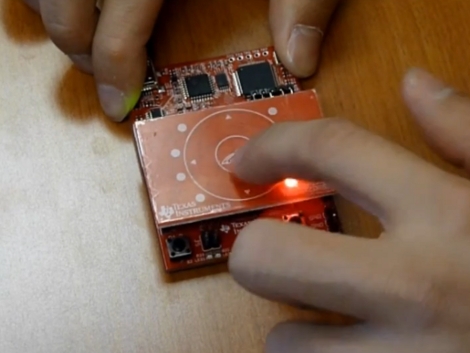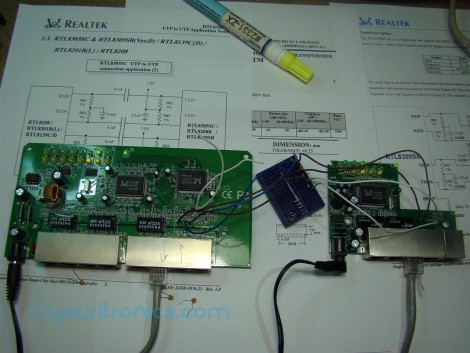
Texas Instruments just released a product they call the Capacitive Touch Boosterpack which is basically a touch-sensitive shield for the Launchpad. The video after the break shows an unboxing and demonstration of the product which TI is launching with a $4.30 limited-time price tag. The red PCB itself has a capacitive touch button in the center, surrounded by a touch-scroll wheel, which is centered in a proximity senor that takes up the rest of the board. There are also nine LEDs which look like they’re soldered on the underside of the board, through routed holes that mount them flush with the top surface. The pack also comes with a new MSP430 microcontroller, the G2452, which has 8 KB of flash memory and takes care of calibrating, reading, and processing signals from the board thanks to the software package that goes along with the add-on kit.
Looks quite nice. There’s a heck of a lot of information in the documentation for this hardware. We do wish it was a bit easier to find board layout information, but we’re sure it’s there somewhere.
Continue reading “Capacitive Touch Sensor Shield For The TI Launchpad”















